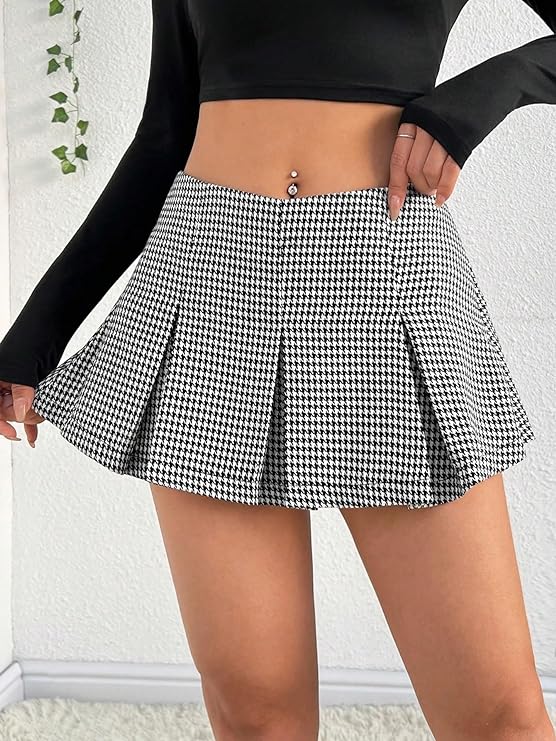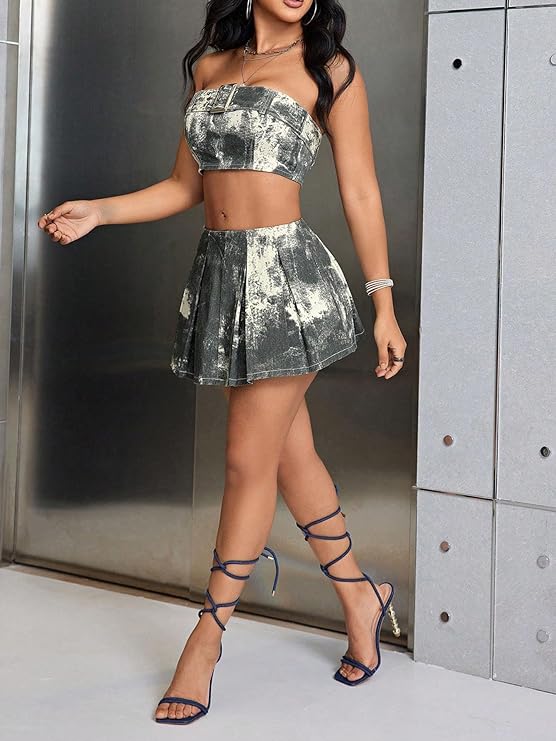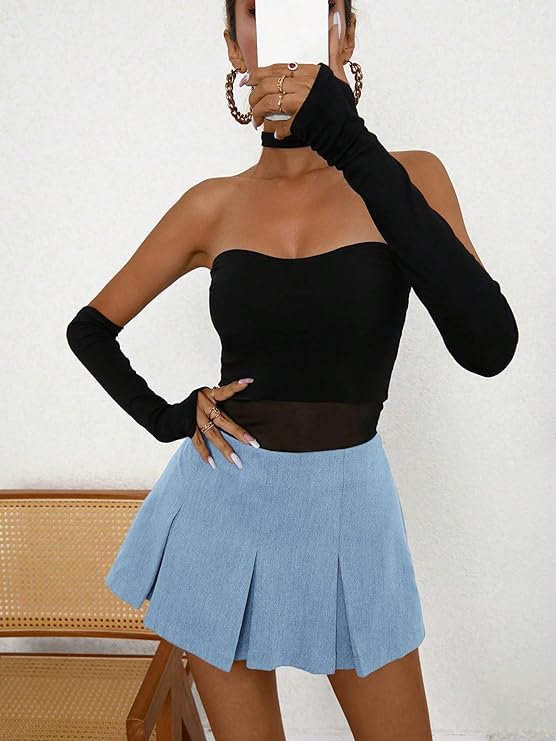Pleated skirts have woven their way through the tapestry of fashion history, emerging time and again as a garment that epitomizes both elegance and comfort. From the sunray pleats of the 1920s to the micro-pleats popular in the digital age, this iconic piece has adapted to the changing tides of style while maintaining its classic appeal. This guide delves into the pleated skirt’s fascinating evolution, explores its various forms, and provides practical advice on styling this versatile piece.
Unfolding the History: The Evolution of Pleated Skirts
The Origins and Historical Significance
Tracing back to Ancient Egypt, pleated skirts were not only a fashion statement but also a status symbol, showcasing the wearer’s social standing. The Greeks further refined pleating, introducing the technique into their draped garments. During the Renaissance, pleating became a craft, with each fold representing the height of luxury and craftsmanship. The pleated skirt’s ability to combine functionality with elegance ensured its survival through various fashion eras, each time adapting to the aesthetic demands of the age.

The Pleated Skirt Through the Ages
The 20th century witnessed the pleated skirt’s transformation into a mainstream fashion item. The 1920s flapper era embraced sunray pleats, which added movement and flair to the silhouette. By the 1950s, uniform pleats became symbolic of the conservative but chic housewife. The punk movement of the 1970s repurposed the pleated skirt into a symbol of rebellion. Fast forward to the 21st century, and pleated skirts embody both nostalgia and innovation, paying homage to their rich history while embracing contemporary fashion technology.
Cultural Impact and Variations
Women skirts have been a canvas for cultural expression worldwide, from the Scottish kilt to the Japanese school uniform. Each variation signifies more than aesthetic preferences; they reflect societal values, tradition, and identity. In contemporary fashion, designers continue to experiment with pleats, creating garments that respect cultural heritage while challenging traditional fashion norms.
Pleats in Detail: Types and Fabric Choices
Understanding Different Pleat Styles
Not all pleats are created equal, and understanding the variations can vastly expand a wardrobe’s versatility. Box pleats offer a structured look, perfect for formal occasions, while knife pleats provide a sharper, more defined silhouette. Accordion pleats, characterized by their narrow, parallel folds, bring a playful movement to the garment. Selecting a pleat style often depends on the desired volume, occasion, and overall aesthetic.

The Right Fabric for the Perfect Pleat
The choice of fabric dramatically impacts the appearance and wearability of a pleated skirt. Stiff materials like cotton or taffeta emphasize the structure of the pleats, making them stand out. On the other hand, softer fabrics like chiffon or silk can create a more fluid, ethereal look. Innovative materials, such as pleated metallics or laser-cut designs, introduce a modern twist to the classic pleated skirt, offering new textures and reflections.
Styling Pleated Skirts: From Classic to Contemporary
Dressing Up or Down: A Versatile Wardrobe Staple
The pleated skirt’s true charm lies in its adaptability. For a casual daytime look, pairing a midi-length pleated skirt with a simple t-shirt and sneakers can create an effortlessly chic ensemble. Switching to a blouse and high heels instantly transforms the outfit into evening wear. The key is in the accessories and accompanying pieces, which can dictate the skirt’s formality.

Seasonal Pleats: Year-Round Fashion
Pleated skirts are not confined to a specific season; they can be styled to suit any weather. In cooler months, layering with tights, boots, and a cozy sweater makes the pleated skirt a practical choice without sacrificing style. For summer, a lightweight, brightly colored pleated skirt paired with sandals and a sleeveless top offers a cool and breezy option. By adjusting the fabric type and layering appropriately, the pleated skirt can be a year-round go-to garment.
Let’s further elaborate on an expanded section:
Understanding Different Pleat Styles
Different pleat styles can dramatically alter the appearance and drape of a skirt, serving various fashion needs and occasions. Knife pleats, perhaps the most classic form, feature closely spaced folds that run in the same direction, creating a sleek and streamlined silhouette. This style is immensely versatile, suitable for both casual and formal wear. Box pleats, with their structured folds that
flare out from the waistline, offer a bolder aesthetic and a more pronounced shape. They evoke a sense of retro glamour and are often seen in skirts with a higher waist and a flared hem, reminiscent of the iconic styles of the 1950s.
Accordion pleats, on the other hand, are characterized by their narrow, uniform folds. They bring a sense of whimsy and movement to the skirt, as they expand and contract with the wearer’s movements, resembling the bellows of an accordion. Skirts with accordion pleats are perfect for those who love a playful, feminine look that resonates with the dynamics of their surroundings.

The Right Fabric for the Perfect Pleat
The choice of fabric is a critical consideration that impacts not only the skirt’s pleats but also its overall wearability and care. For example, synthetic fabrics like polyester or rayon can hold pleats well and are generally more resistant to wrinkles and easier to maintain. They are a practical option for those who lead a busy lifestyle or who travel frequently, as they keep their pleated shape throughout the day with minimal effort.
Natural fibers, such as cotton or wool, are also popular choices for pleated skirts. They tend to be more breathable, making them comfortable to wear in a variety of climates. Cotton pleated skirts, with their crisp folds, offer a clean, preppy look, while wool skirts provide warmth and a more substantial drape, making them ideal for fall and winter styles.
Dressing Up or Down: A Versatile Wardrobe Staple
The pleated skirt’s versatility extends from the boardroom to the boardwalk. Dressing it up typically involves selecting a skirt with finer pleats and a more luxurious fabric, such as silk or satin. Paired with a tailored blouse or a fitted blazer and completed with high heels, statement jewelry, and a clutch, a pleated skirt can create a sophisticated and polished look perfect for formal events or professional settings.

On the flip side, dressing a pleated skirt down for a casual affair is just as effortless. Here, a relaxed t-shirt tucked into a cotton or synthetic pleated skirt suffices to create a comfortable yet stylish ensemble. Adding a pair of canvas sneakers, a denim jacket, and minimalistic accessories can embody a laid-back, carefree vibe that’s ideal for weekend outings or a casual day at the office.
